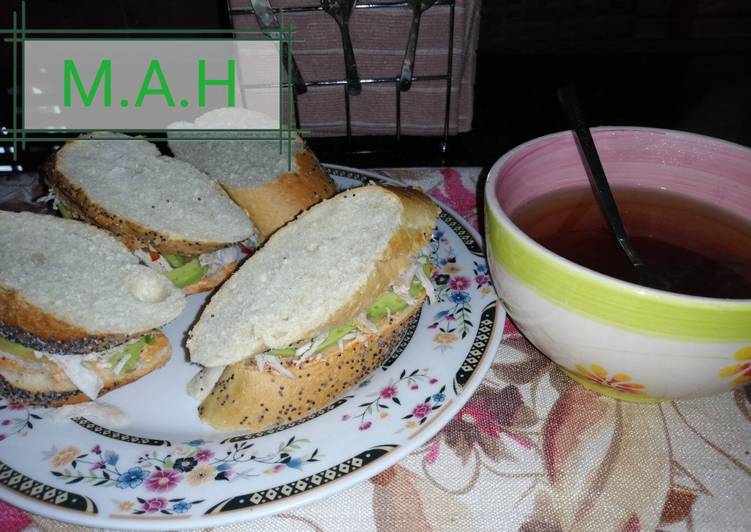
Hey everyone, I hope you are having an amazing day today. Today, I’m gonna show you how to make a special dish, zero waste ramen. One of my favorites food recipes. For mine, I’m gonna make it a bit tasty. This is gonna smell and look delicious.
Zero Waste Ramen is one of the most favored of current trending meals in the world. It is appreciated by millions daily. It’s simple, it is fast, it tastes yummy. Zero Waste Ramen is something that I’ve loved my whole life. They are nice and they look fantastic.
Por fin el tutorial que tanto esperaron del desodorante que me estoy haciendo últimamente. Es lo mas efectivo que probé hasta ahora. The zero waste guide. Подписаться. rocket_science. Подписаться. bambaw.zerowaste.
To get started with this particular recipe, we have to first prepare a few components. You can have zero waste ramen using 16 ingredients and 8 steps. Here is how you cook it.
The ingredients needed to make Zero Waste Ramen:
- Prepare Veggie scraps perfectly washed and clean
- Take 2 boneless chicken thighs
- Take Fresh or dry ramen noodles
- Prepare 1 Roasted Nori sheet
- Prepare 2 eggs
- Take 1/2 cup soy sauce
- Make ready 1/2 cup chicken stock or dashi stock
- Get 1 clove garlic
- Prepare 1 inch slice of fresh ginger
- Get 1 scallion
- Take 2 tsp brown sugar
- Prepare 1 tsp rice vinegar
- Get 1/4 cup mirin
- Make ready 1/4 cup sake or dry white wine
- Make ready Toppings of your choice
- Take to taste Salt and pepper
Never buy hair elastics, coffee filters, or plastic sandwich baggies ever again. And as a zero waste consumer, you're definitely being heard. While most people think of the zero waste lifestyle as having a mason jar for a trashcan, it's far less radical than it seems. Keep your hygiene routine zero waste with these simple product swaps.
Instructions to make Zero Waste Ramen:
- Put veggie scraps in a large heavy pot and cover with water. Add around 2 tsp of salt, and bring to a boil. Boil them in high heat for about an hour tops.
- Remove the pot from the fire and strain the veggie scraps, reserving the resulting broth. It will be very bland. Don't worry, you can adjust the seasoning later.
- In a sauce pan mix the chicken or dashi stock with the soy sauce, the mirin, sake, sugar, rice vinegar, smashed garlic and ginger, and scallion. Stir and bring to a simmer. Cook on low heat until the mixture has reduced to about 1/2 cup of liquid. Be careful not to let the soy sauce burn. This will be the Tare, and will adjust the seasoning of the ramen.
- Boil two eggs, straight from the fridge, for 6 minutes. Start counting once the water starts boiling. The yolk should come up soft, or at least, perfectly yellow with no grayish rim.
- Add salt and pepper to both chicken thighs. In a skillet, cook the thighs skin side down first, until crispy and golden. Then flip and repeat. Set aside to rest, then cut each thigh into bite size strips.
- Cook the ramen noodles as instructed in the package. If you can't find any, use fresh spaghetti and replace the salt in the water with baking soda (sodium bicarbonate). Around 2 tsp should do.
- Fold the nori sheet four times and cut it into little rectangles.
- Finally, assemble the ramen: place 3 tbsp of tare in the bottom of the bowl, then add the noodles, followed by 4 ladlefuls of veggie broth. Place the toppings on top (the chicken thigh, and the egg sliced in half, and 4 nori sheets). I also added a shitake mushroom, a few slices of carrot, and corn. Be creative, and add any topping you want. Some flavoured oil can also add a great finishing touch (chilli oil, sesame oil, garlic oil, etc).
While the journey towards zero waste is a continuous one, these alternatives to wasteful items will make it a little easier. Everyday items from rotisserie chickens to cheese to cereals, crackers and gum are packaged. Since the easiest place to find. Zero Waste is a set of principles focused on waste prevention that encourages the redesign of resource life cycles so that all products are reused. The goal is for no trash to be sent to landfills, incinerators or the ocean.
So that is going to wrap it up for this exceptional food zero waste ramen recipe. Thank you very much for your time. I’m sure that you will make this at home. There’s gonna be more interesting food at home recipes coming up. Remember to bookmark this page in your browser, and share it to your loved ones, colleague and friends. Thanks again for reading. Go on get cooking!


